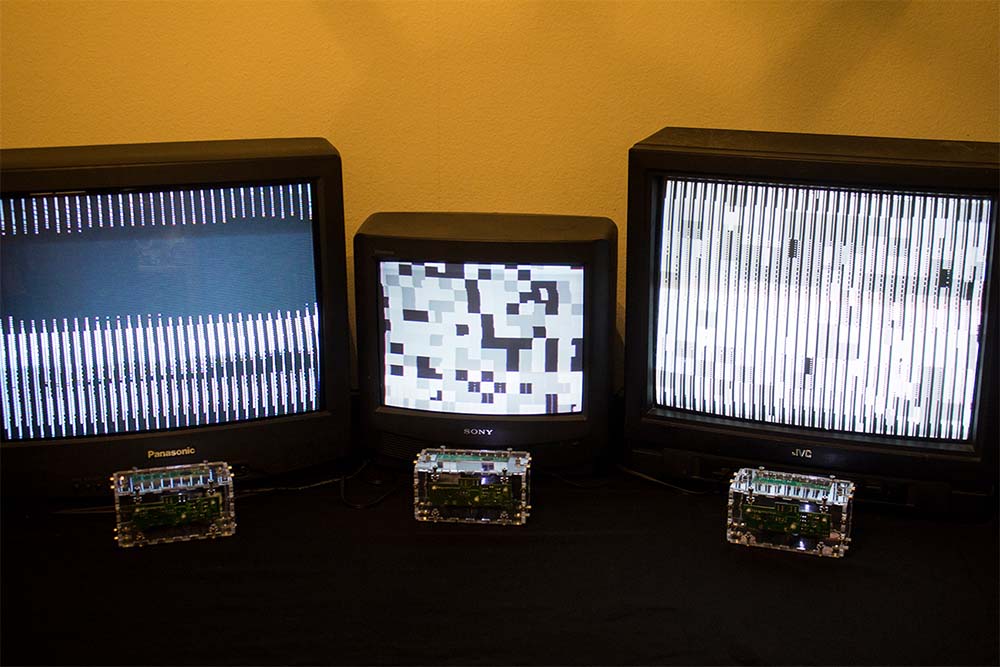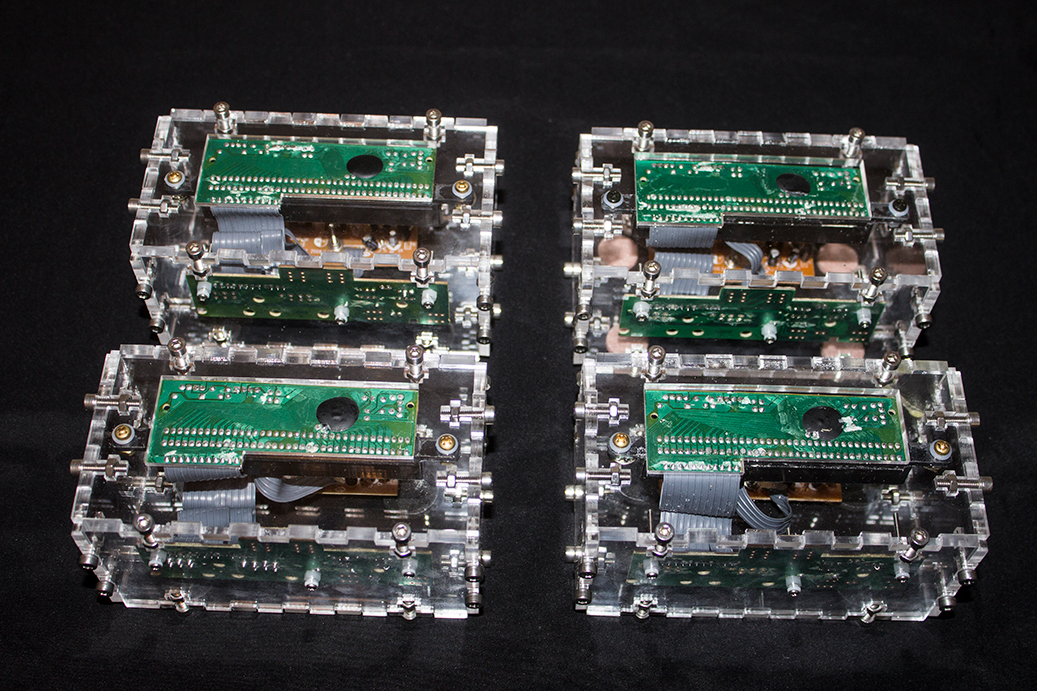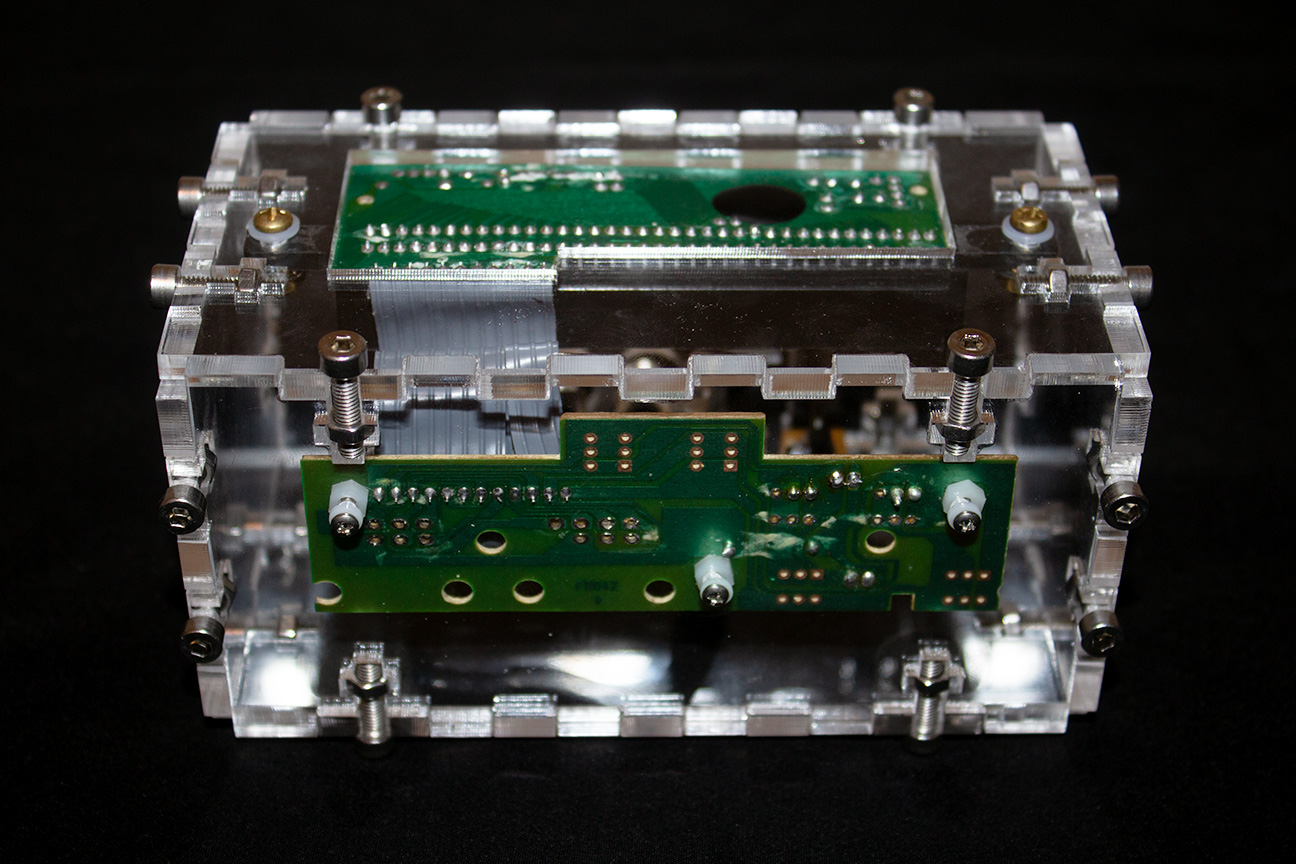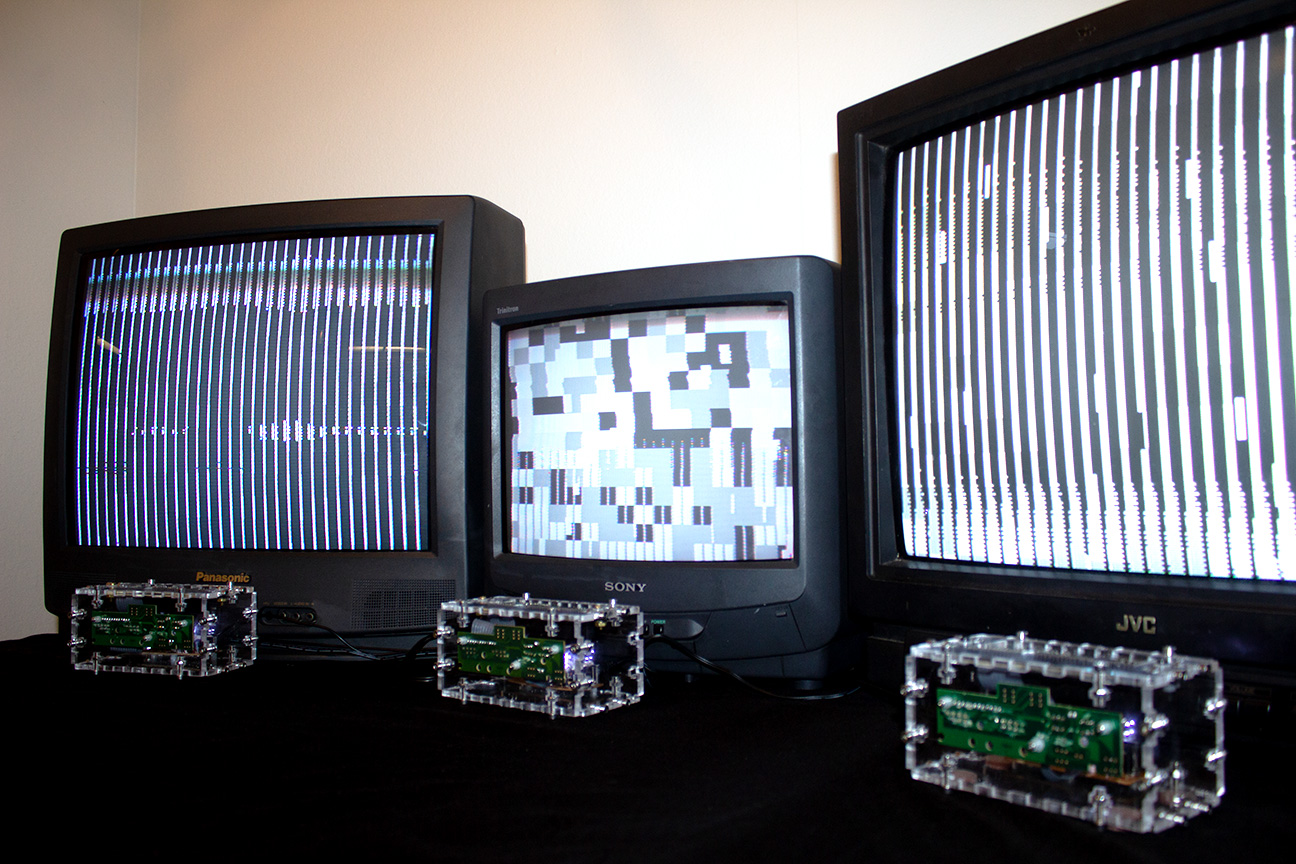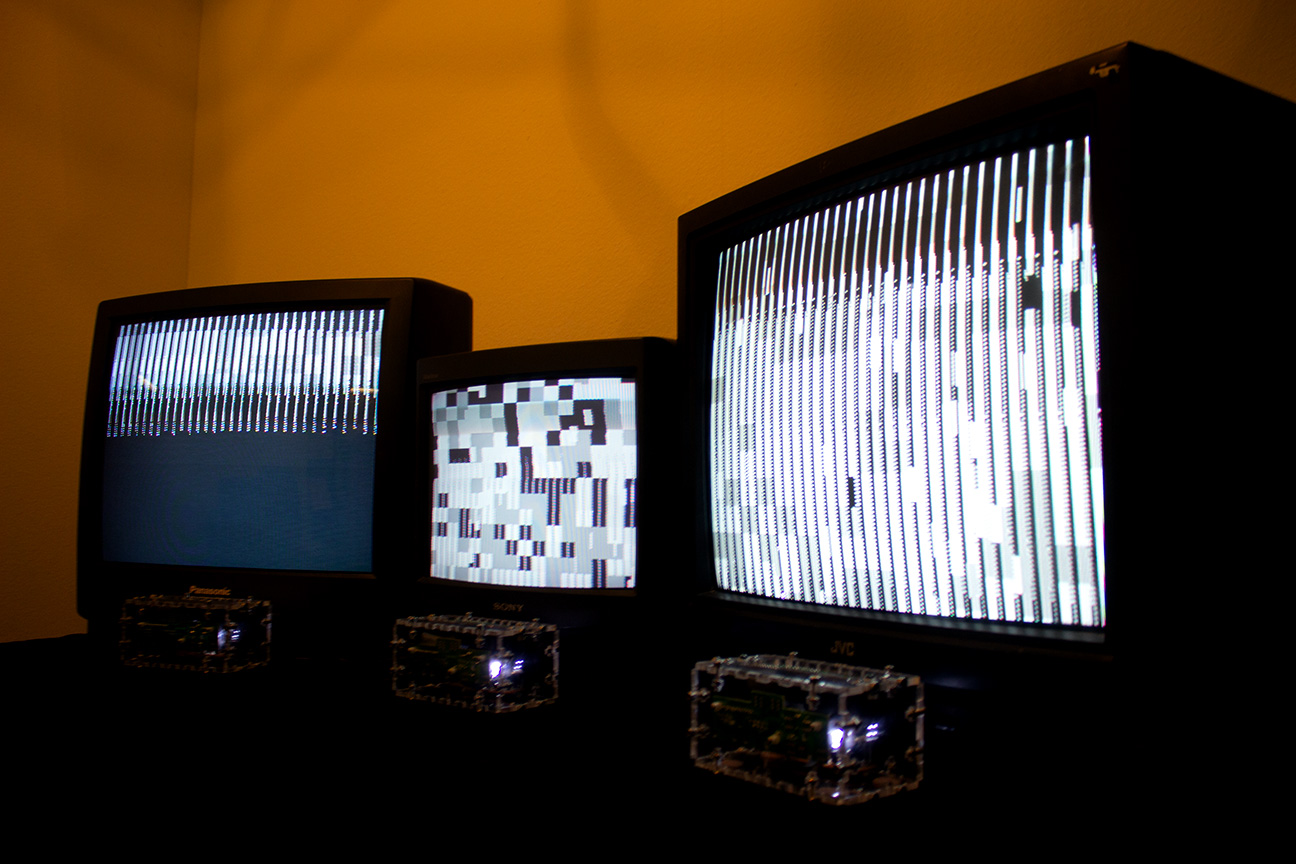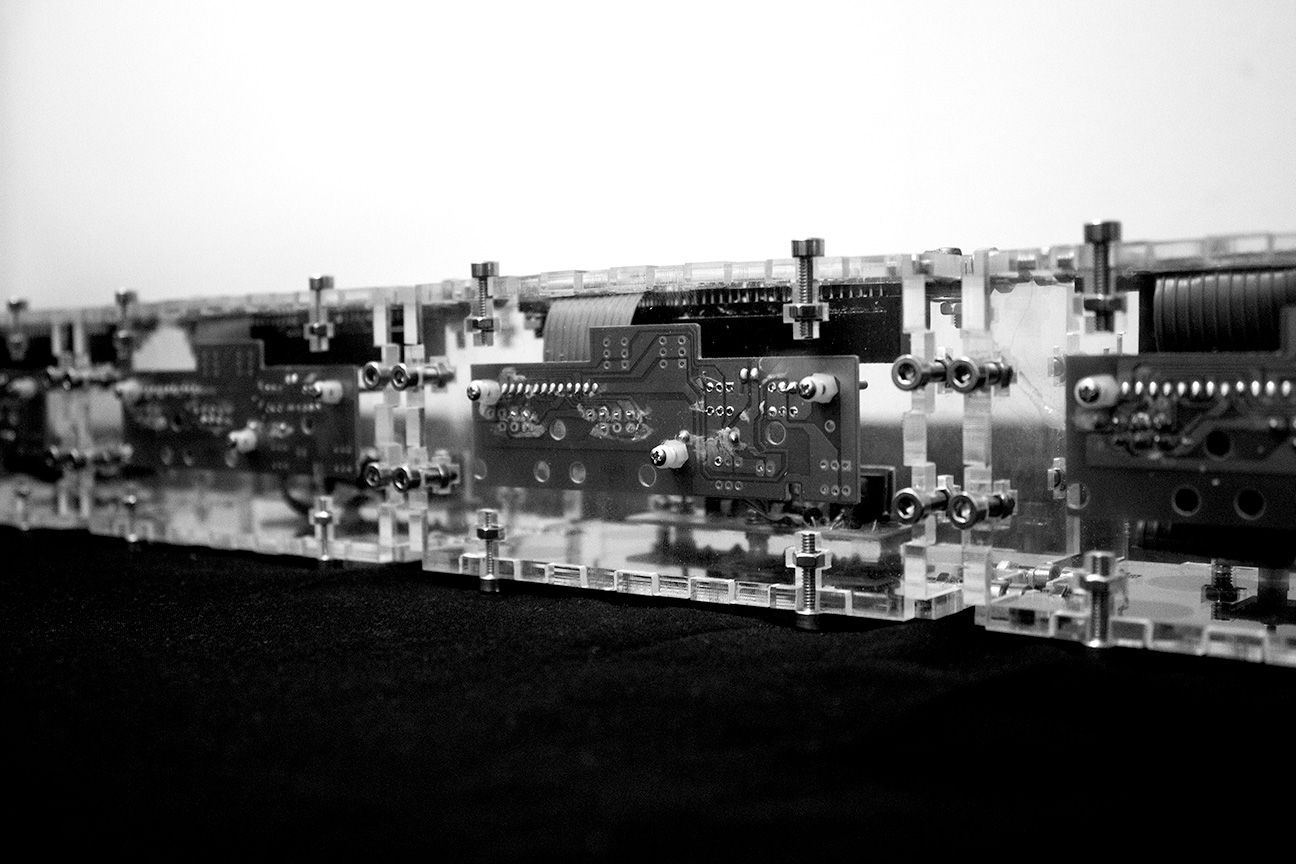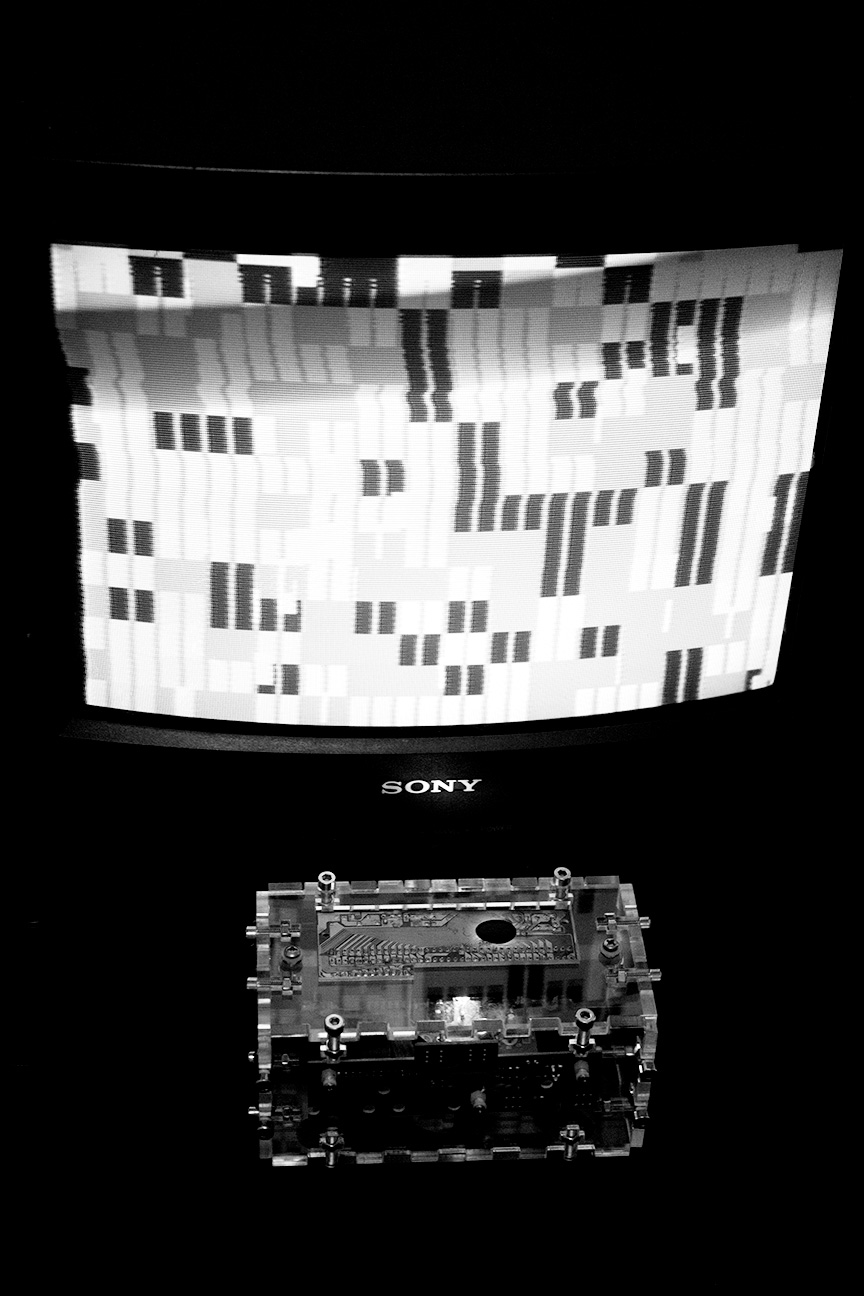Retrono (2016)
More writing, video links, and image documentation is coming soon for this project, thank you for your patience.
The below
writing is minimally edited from my MFA thesis which frames the artefact
as a case study in repurposing preexisting electronic
systems while exposing their circuitry to direct human contact as a means of control. The
Retrono interface is an appropriated video game console which is repackaged to facilitate a
completely new and unconventional interaction schema between the device and interactee. The
interface exposes, highlights, and reveals the internal circuitry of the device, ironically disguising
it from recognition and liberating it from the uses of its past life.
Project Background and Introduction
The creation of this interface has been informed by the methedology of “Designing for
Hackability” as proposed in the 2004 international conferences Designing Interactive Systems (DIS) by Anne Galloway,
Jonah Brucker-Cohen, Lalya Gaye, Elizabeth Goodman, and Dan Hill in the paper with the same name [33]. Interfaces
that
are designed for Hackability are customizable: allowing the user to turn them into the device they want them to be.
Hackable interfaces cultivate reciprocity between the designers, users, and the device itself while embracing
unanticipated usage with both transparency and robustness in construction. In the current age of hyper-
normalization and increased technological literacy, a revitalized consumer desire for individuality and
personalization is emerging and hackable design is increasingly common. McPherson and Zappi’s D-Box, as well as
Peter Blassers Paper Circuits and inner surface creations, introduced earlier in this section are all examples of
projects which are designed for hackability along with select projects introduced in later chapters such as the
Discovery Synth2 and Modular SNES.
Hardware hacking and circuit bending are both inherently violent activities that tend to mutilate the original
device: altering its capabilities, interactions, and even purpose. While that method is exemplified in several works
presented in later chapters, and is a valid approach, not all profit from those methods. A source of provocation and
the catalyst for many projects is Christina Kubisch’s work as an installation artist. Christiana’s installations
empower visitors to listen to electronic circuitry with her custom magnetic flux sonification headphones. The
headphones enact their magic from afar without any violence, obtrusiveness, or even physical contact and are a
direct departure from the exchanges typical with circuit bent devices. Her interactions are introverted yet
exploratory, covert and empowering."
Design and Construction
The Retrono interface discussed in this writing is furthermore directly influenced by Peter Blassers work with
developing instruments under the philosophy of inner surface. The
interface, used in the installation Cathode Ray Tubes, is not a blue-sky
project built from the ground up. Instead, creating a Retrono is an act of removal and
replacement as oppose to construction. The interface is a Retron retro video game console
which consists of a hardware emulator for the famed Nintendo Entertainment System (NES).
To transform a Retron into a Retrono takes three steps:
1. The controller ports, reset button, and power button are removed from the Retron
2. The red power LED is replaced with a white LED
3. The original plastic case is removed while the hardware is rehoused in a laser-cut clear
acrylic box
The Retrono cases have four openings: one for the power plug, one for the video output, one
for the audio output, and one large rectangular opening directly above where the unit’s main
circuitry is housed intentionally exposing board to outside interference - electromagnetic of
physical. Once a Retron is converted into a Retrono it is unable to play NES games; the case
does not allow a game cartridge to be inserted into the cartridge slot and the interface is
assembled without a game inside. Unlike a NES console which has mechanisms to detect the
presence of a game cartridge and will not attempt to synthesize video output without a game, the
Retron has no such mechanisms and will always synthesize a video output. When the devise is
housed in its original case it is protected from outside interference and the image it displays will
usually be black, when the console is turned into a Retrono this changes. The console attempts
to decode the floating electrical charges at each of its input pins as video and audio data. The
once video game console is transformed into an 8-bit audio-visual synthesizer whose output is
can be manipulated by the electrical properties of its user’s body.
Retronos are most effective when CRT TV’s are used to display their output. The strong electromagnetic field emanating from the tubes turbocharges the reactivity of the Retrono creating a feedback loop between the TV and Retrono. As they are not functional in a conventional sense there is no right, or wrong, way to interact with a Retrono. They are created out of the desire for a hyper-reactive system that people can play with and explore without the burden of any expectations or instructions.
Related Works and Writing
The Retrono hardware project was purpose-built to realise the installation Cathode Ray Tubes which can be found HERE.
Works Referenced in Writing
[33] A. Galloway, J. Brucker-Cohen, L. Gaye, E. Goodman, and D. Hill, “Design for hackability,” 2004, p. 363.
